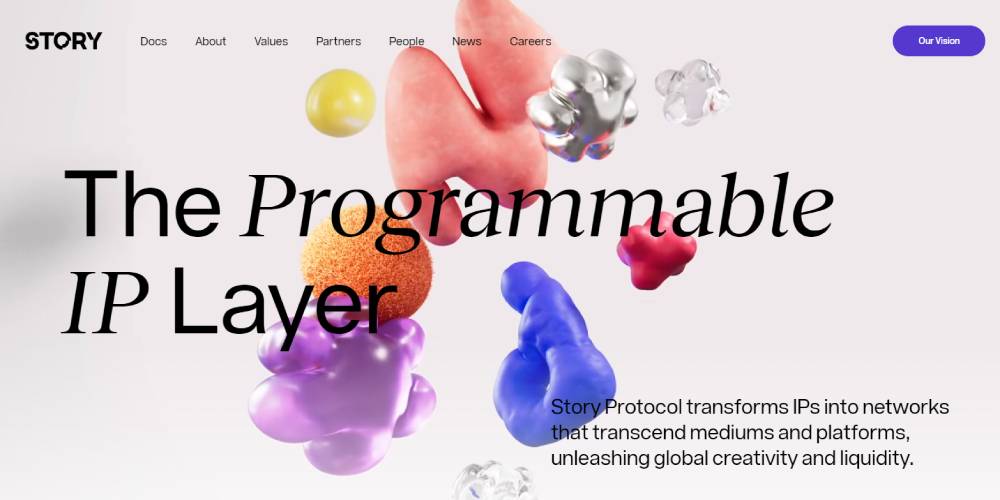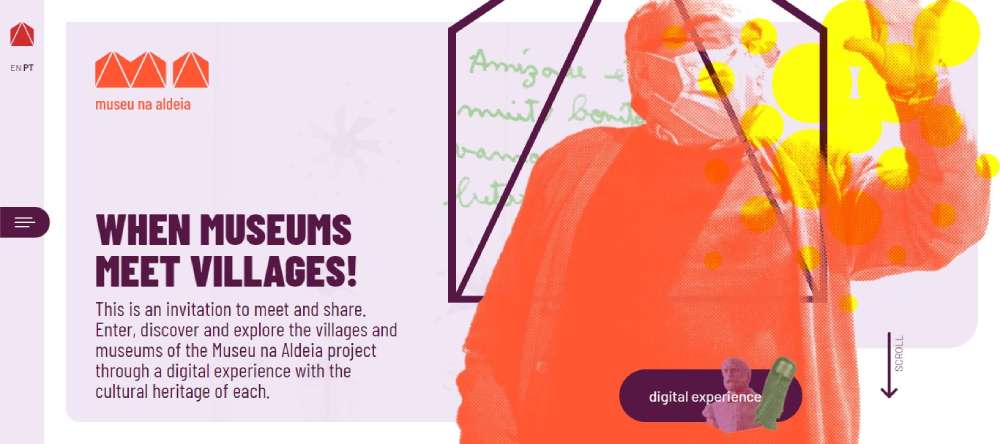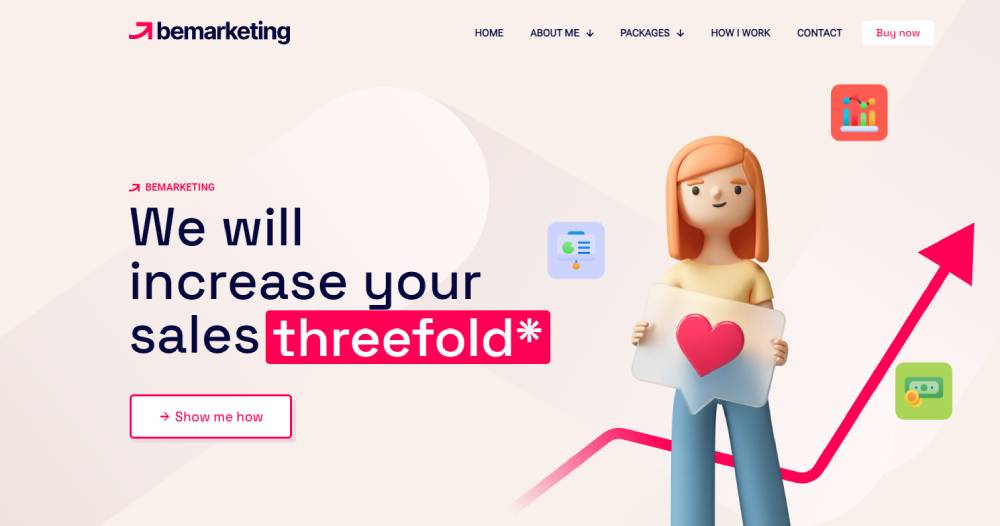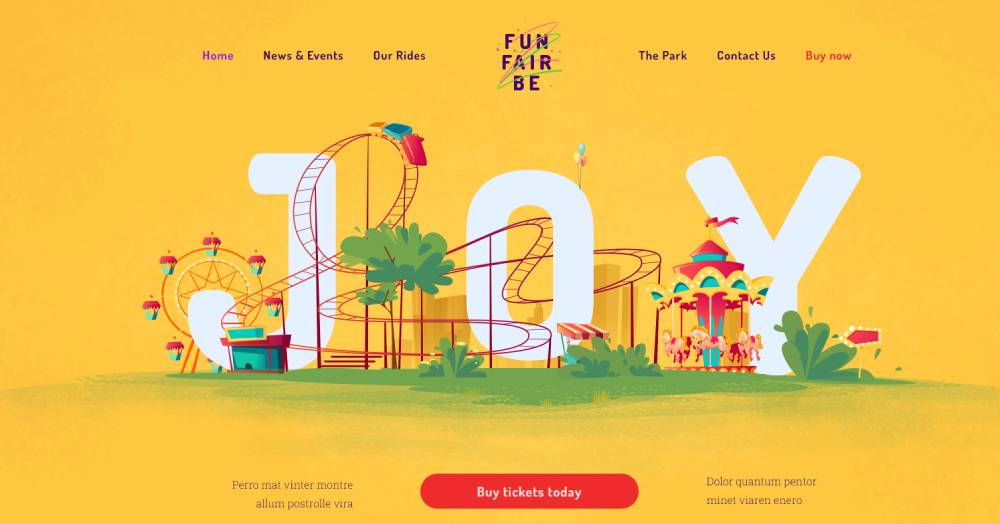Teacher Website Examples to Inspire Designers
April 19, 2024Stunning Yoga Website Design Examples for Inspiration
April 21, 2024Imagine landing on a webpage and instantly feeling a certain way, captivated, energized, or calmed, without even reading a word.
This silent conversation is the craft of color theory in web design, a symphony of hues intricately woven to speak directly to the subconscious.
Here lies the power to tell a brand’s story, evoke emotions, and drive actions – all through the visual melody of colors.
In this exploration, the veil will be lifted on how strategic color choices can be the difference between a site that stands tall or one that fades into the digital abyss.
Delve into the psychology behind colors, the cultural language they speak, and the practical sorcery in crafting palettes that resonate.
Discover the best practices for integrating color theory with design strategies that align with site goals, enhance user experience, and ensure accessibility for all.
By the end of this journey, the wizardry of color theory will no longer be a mystery, providing the tools to turn any web canvas into a captivating masterpiece.
Fundamentals of Color Theory
Understanding the Color Wheel
Let’s take a walk around the color wheel, an artist’s best friend and a vital buddy for anyone diving into web design.
Picture a big, bright pie sliced into various colors stemming out from the center. At the heart of it all, we find the primary colors: red, blue, and yellow. These are the original parents of the colors we know and love; they can’t be created by mixing others, they just are.
But mix we must, and when we do, magic happens. Combining primary hues gives birth to the secondary colors.
Red and blue get cozy to make violet; blue and yellow shake hands and produce green; yellow and red have a dance and yellow says hello.
There’s a sense of balance here, a harmony in the making. Because create we must, and when we combine these friends, we meet the adventurous tertiary colors, a quirky blend of primary and secondary, like red-orange and blue-green.
Color wheel chats need to include the dynamic duos and trios: complementary, analogous, and triadic colors.
Complementary colors are the opposites, sitting across from each other, like red and green – they bring out the best in each other.
Analogous colors are the neighbors, like green and yellow – familiar and comfortable. Triadic colors? Now, they are a diverse group – three equidistant players on the wheel, bringing a balanced yet bold vibe.
Color Terminologies and Relationships
Okay, it’s time to sharpen our color vocabulary. First up, hue. That’s just a fancy word for the color itself. Think of it as the pure essence of color.
Next, let’s talk about saturation—that’s the intensity of a hue, its colorfulness. A color can shout or whisper; how saturated it is will determine the volume.
What about lightness? Sometimes called value, it’s all about how light or dark a color appears.
Lightness sails on a scale from bright white to rich black, with the hue of our choice aboard for the ride.
We’ve got more friends joining the party: tints, shades, and tones. Add white to your pure hue, and you’re walking in a field of tints – they’re the lighter offspring of your color.
Throw some black into the mix, and you create shades, the deeper, darker sides of the hue. Tones are the level-headed ones – they come to life with a touch of gray, a harmonizing force dampening the wildness of pure colors.
Now, about the harmony of it all. Color relationships can make or break a design. Think of them as different chords in a melody.
They can delight or jar when put together; it all comes down to finding that sweet spot where different hues sing in unison. Whether it’s the monochromatic whisper of similar tones or the loud chorus of contrasting shades, it’s all about that inner sense of balance.
Color Schemes and Their Applications
Types of Color Schemes
Picture a painter at their canvas, but the canvas is your screen and the paint is digital.
It’s crucial to pick the right combination of colors because they set the mood, the vibe, and the visual story that unfolds. The paint palette is big, though, and choosing can be as tricky as nailing jelly to a tree.
Monochrome is like a single note played in varied pitches; one color, different shades. It’s safe, it’s harmonious, and it’s snug as a bug in a rug.
But sometimes you crave a bit more spice, right?
Enter Analogous schemes, a hand-holding trio of colors that live side by side on the color wheel. They’re like a flawless harmony, pleasing and soft.
The design feels like wearing your favorite sweater: comfortable, reliable, but still stylish.
Now for the drama: Complementary colors. A pair of opposites attract, like fire and ice, loud and proud.
They punch up the volume and can make buttons and calls-to-action on a webpage jump out like a frog on a hotplate.
Fancy more complexity? Go Triadic. Select three colors spaced equally apart, and you’ve got a dynamic ensemble. But hold on; we have a fourth musketeer: Tetradic.
This involves four colors in two complementary pairs. It’s like cooking with exotic spices—excellent if you know what you’re doing but easy to overdo.
Choosing these ensembles isn’t whimsical. Ask questions: What journey do I want to take the viewer on? Is this a serene, walk-in-the-woods vibe or a neon-lit, downtown buzz? Contrast, balance, and harmony are the guiding stars here – use them, and watch your web canvas come alive.
Practical Applications in Web Design
Grab your designer hat because we’re about to weave these color schemes into the fabric of user experience.
They aren’t just pretty faces; they do the heavy lifting in guiding eyes and clicking fingers.
First off, Enhancing User Navigation. Colors are more than show ponies; they’re workhorses, charting the course for users like signs on a highway.
Monochrome can guide users with subtle nudges, while complementary combos can highlight the important pit stops like sign-up forms and buy buttons.
As for Site Aesthetics, think of color schemes as the décor of a room; they can whisper elegance or scream fun.
A dash of analogous harmony can wrap a website in a cohesive blanket, while triadic schemes toss in a bit of joyful chaos for flavor.
Now, let’s unfold some Case Studies. Recall that minimalist design with the smooth blue hues and a dash of yellow that went viral?
Or that e-commerce juggernaut that uses red accents to rev up the ‘Buy Now’ urge? Their secrets weren’t just their colors but their methodical color scheme choices meshing with the brand’s heartbeat.
People remember the visuals.
The tints, tones, and shades in these schemes have the power to make a visitor stick around, share with friends, and click where it counts.
Psychological Impact of Colors
Color Psychology Basics
Imagine colors whispering secrets, and each hue is a key that unlocks different emotions and reactions; that’s color psychology for you.
It’s a real thing, affecting how folks feel when they land on a page. Reds scream passion and urgency – ever wonder why sale signs are often red?
It’s like a visual shot of espresso. Blues calm the soul, like gazing at the ocean or a clear sky.
Each color sneaks into our subconscious, triggering reactions we’re sometimes not even aware of.
They shape our moods, influence decisions, and even affect appetite. Yep, that’s why fast-food joints often rock the red and yellows – it’s like a one-two punch for hunger and haste.
And green? It’s more than just envy or luck.
It embodies tranquility and growth, planting seeds of peace and renewal in the mind’s eye. Plus, the world agrees it’s go-time with green – like a universal thumbs-up.
Applying Color Psychology in Web Design
This color chit-chat becomes real talk when splashing them across a website. It’s matchmaking, really – lining up the right colors with what a brand stands for.
Say a website’s all about eco-friendly products; wrap it in shades of green, sprinkle in some earthy browns, and you’ve set the scene for Mother Nature’s digital home.
It’s like asking, who’s coming over? Young, vibrant audiences might dig bright, punchy colors that scream fun and adventure.
A more mature crowd? They might lean towards subdued, sophisticated palettes that whisper class and trust.
Take a deep dive into who the audience is, what their hearts beat for, and how they see the world.
Tailoring the color wardrobe to fit their tastes makes for a welcoming digital handshake and a “Come on in, we get you”.
Cultural Considerations in Color Selection
The Importance of Cultural Context
Like a globe-trotter picking up souvenirs from every stop, every color scoops up meanings along its travels.
This invisible suitcase of meanings varies from one place to another. It’s fascinating how a color can get lost in translation across cultures.
As someone thinking about every dot on the map, walking through this is like tip-toeing across a floor of cultural thumbtacks.
Colors talk in a language without words; they might tell a story of celebration in one country but sing a ballad of mourning in the next.
Dive into every culture, and you’ll see reds can mean good fortune, or they could be fierce warnings.
Whites?
They could be clean slates or symbols of grief. Context is queen here, and acknowledging that is like giving a nod to each traveler’s unique journey.
Strategies for Global and Culturally Diverse Audiences
First, let’s talk research – not the nose-in-book kind, more like a get-your-hands-dirty, meet-the-people gig. It’s about reaching into the diversity cookie jar and knowing what each color cookie stands for to the fingers reaching out.
Survey says… understanding your global audience is step one. You’ve got to know their norms, taboos, and triggers.
That “wow” factor can quickly turn into “whoa, hold up” if a color rubs the audience the wrong way.
Avoiding that faux pas means peeling back the layers of cultural paint to ensure your palette respects sensibilities and expressions.
Imagine the online world as one big potluck. The diverse spread is what makes it a feast, not a single-dish dinner.
So, understanding audience shades isn’t just about avoiding the bad; it’s a full embrace of the good, the alignment, the authenticity.
It’s a commitment to ensuring every click feels like a warm handshake, not a toe-stepping dance misstep.
Creating and Implementing Color Palettes
Designing a Color Palette
Think of this process like a chef foraging for the perfect ingredients. First up, scouting for that primary color – the one that shouts the loudest about what the vibe is. It’s the hero of the story.
Maybe it’s as bold as a superhero’s cape or as subtle as the hint of dawn. This choice is the anchor, the main melody in an orchestral piece.
Now, every hero needs a squad. So, picking supporting colors is like casting the best sidekicks – they add depth, contrast, and complexity.
They’re the harmony supporting the melody. It’s about mixing and matching till it feels like that moment when everything falls into place.
For superpowers, there are tools galore. Matching hues using Adobe Color, playing with tints and shades, and tapping into color psychology – they’re like the utility belt for the task.
There’s a wealth of resources out there: color libraries, digital tools like Coolors, and even nature itself. From the Pantone Matching System to CSS and SASS preprocessors managing those shades and RGB color models, everything’s ripe for the plucking.
The 60/30/10 Rule in Color Application
Ever heard of this rule? It’s not just numbers; it’s a design mantra. Imagine a room dressed in 60% of a dominant hue, 30% secondary color to lessen the intensity, and then a 10% accent color – the cherry on top.
It’s like a tried-and-true recipe for visual appeal. This rule is a balancing act, a see-saw ensuring nothing gets too loud or whispers too quietly.
Balancing Color Usage in Web Design is like giving each hue a role in a play. The lead actor, the supporting role, and the cameo – they each contribute to the story without stepping on each other’s lines.
Now, bring in Examples of Effective Implementation in Web Layouts – a portfolio, perhaps, where the eye-catching 10% is handpicked icons, or an e-commerce site where the call-to-action buttons pop, thanks to that accent color.
Stick to this formula, and watch as each section comes alive in a harmonic dance.
It creates a rhythm, a visual language that speaks without saying a word.
Accessibility and Contrast in Color Usage
Importance of Contrast for Readability and Accessibility
Step into a room where the lights are dim. Notice how hard it is to find your way around? Now flip the switch, let light flood in, and boom – everything’s clear.
That’s the power of contrast in a nutshell. It’s not just about making things pop; it’s about guiding folks through a space, or in our case, through a webpage.
High contrast isn’t just a style choice; it’s a helping hand for those squinting at screens or those who navigate the digital world differently due to visual impairments.
The right contrast turns the baffling maze of a website into a clear path of breadcrumbs.
Tools and Guidelines for Evaluating Color Contrast
Thank goodness for the toolbox we have for this job. There’s a slew of gadgets and gizmos to ensure no one’s left in the fog.
We’ve got digital tools like the Color Contrast Analyzer, which is like a trusty sidekick that spots potential pitfalls before they trip anyone up.
And guidelines? They’re like the secret recipe for inclusivity. W3C lays it out with WCAG (Web Content Accessibility Guidelines).
Imagine rules of the road that make sure everyone, and I mean everyone, gets where they’re going safely.
Balancing Aesthetics with User Accessibility Needs is like walking a tightrope. Leaning too much on swanky trends might leave some users teetering on the edge.
But focus solely on accessibility, and you risk a design that’s as bland as unsalted crackers. It’s about mixing that cocktail to the right measure.
Techniques for Enhancing Web Accessibility Through Color
Dive a little deeper, and it’s all about using color as signposts – a beacon for the next click, a spotlight on important info. Clever use of hues can guide users like a tour guide in a museum, highlighting the masterpieces without saying a word.
Strategies for Using Color to Improve Navigation and Information Hierarchy are about setting up a visual pecking order.
Like guests at a dinner party, every element on the page needs to know its place – the important bits getting the head-chair and the background details not outshining the star of the show.
Ensuring every website visit is as smooth as a jazz tune means Ensuring Compliance with Web Content Accessibility Guidelines (WCAG). It’s like hitting all the right notes so the tune hums along sweetly for all ears, or in this case, all eyes.
Best Practices for Color Theory Application in Web Design
Integrating Color Theory with Overall Design Strategy
Imagine weaving a tapestry with a rich variety of threads. Each color has a role, a purpose, a moment in the sun. Here, it’s not about splashing paint wildly; it’s about crafting a harmony where each shade complements the other, moving the narrative forward.
Laying down a color plan involves asking: “What’s the goal here?” Is the target to soothe like a gentle stream or energize like a morning jog? It’s peering through that lens when picking a palette.
Colors wrap around site goals, cozy as a sweater, shaping user interactions like a potter molds clay.
Would cool blues instill trust for an online bank? Or maybe nurturing greens to emphasize an eco-friendly brand? It’s syncing up those vibes with the website’s heartbeat.
The magic happens in Aligning Color Choices with Site Goals and User Expectations.
It’s all about living up to that unspoken promise made when someone clicks a link and lands on a page. Expectations are like unlit candles; the right colors can be the match that lights them.
And then, there’s the Continuous Testing and Refinement Based on User Feedback. Launching a site is just the opening act.
What follows is listening—really listening—to what visitors say. Their voices pave the path for tweaks and polishes, making sure the color story stays fresh and relevant.
FAQ On Color Theory In Web Design
What is the significance of color theory in web design?
Creating a website without color theory is like baking without a recipe; you need understanding and balance to evoke the right feelings and actions from visitors. It’s essential for brand representation, user engagement, and overall aesthetic cohesion.
How do I choose the right color palette for my website?
Start with the brand’s identity and the message you want to communicate. Use tools like Adobe Color for inspiration and consider user psychology. Balance warm and cool tones and remember accessibility guidelines like WCAG to ensure readability.
Can color influence user behavior on a website?
Absolutely, hues carry emotional weight. For instance, red can create a sense of urgency, prompting quicker decision-making, while blue can instill trust and calm. Picking the right shades can guide user actions subtly yet effectively.
What are the best practices for using color contrast in web design?
The key is readability and accessibility. High contrast ratios, as recommended by WCAG, help users with visual impairments navigate content. Aim for a balance that is eye-catching but not glaring, using contrast analyzers to refine your choices.
How important is it to consider cultural color meanings in web design?
Immensely, if you’re speaking to a global audience. Colors like white can signify purity in one culture and mourning in another. Research and audience understanding are crucial to ensure your color choices resonate appropriately across diverse cultures.
What is the 60/30/10 rule in color usage, and should I follow it?
It’s a classic interior design principle adapted to web design. Use 60% as your dominant hue, 30% as a secondary color, and 10% for an accent color to create a balanced, harmonious site. It’s not a strict rule but a solid guideline for aesthetics.
How does color psychology play into web design?
Color psychology is the cornerstone of inducing emotions and reactions in users. Understanding it helps in crafting experiences that align with the site’s goals. Whether calming or energizing, the psychological impact of colors cannot be overstated in web design.
What tools can I use to create a color scheme for my website?
Besides Adobe Color, Coolors and Palette Generator are great sources. Integrating tools like SASS or LESS can also manage complex schemes in stylesheets, while resources like the Pantone Color System ensure consistency across digital and physical branding.
How do I ensure my website’s color palette is accessible to all users?
Use contrast checkers and refer to WCAG. Opt for color-blind friendly palettes and ensure there’s sufficient contrast between text and background colors. Incorporating tools like A11y can guide accessible-friendly color decisions.
Is it important to keep up with color trends in web design?
While trends can inspire, grounding your choices in the brand’s identity and audience preferences is paramount. Trends come and go, but the emotional and functional use of color is timeless. Let trends inform, not dictate, your color strategy.
Conclusion
Weaving through the intricate fabric of color theory in web design, we’ve unraveled how color choices shape the very skeleton of a user’s experience. It’s the silent whisper that either charms or alarms, the pivot on which user engagement swings. From accessibility and cross-browser color consistency to emotional resonance and brand alignment – it’s undeniable that each hue holds power.
In closing, remember that a website isn’t simply a canvas for vibrant aesthetics. It’s a strategic puzzle where each piece – whether it’s the soothing tones of a minimalist design, the bold statement of high-contrast visuals, or the cultural nuances echoed in a color palette – is meticulously chosen to enhance the user’s journey. By leveraging the unspoken eloquence of colors, web design transcends being just visually appealing; it becomes evocatively compelling and inclusive, beckoning each visitor with a visual language that speaks without words.
If you enjoyed reading this article on color theory in web design, you should check out these articles also:













